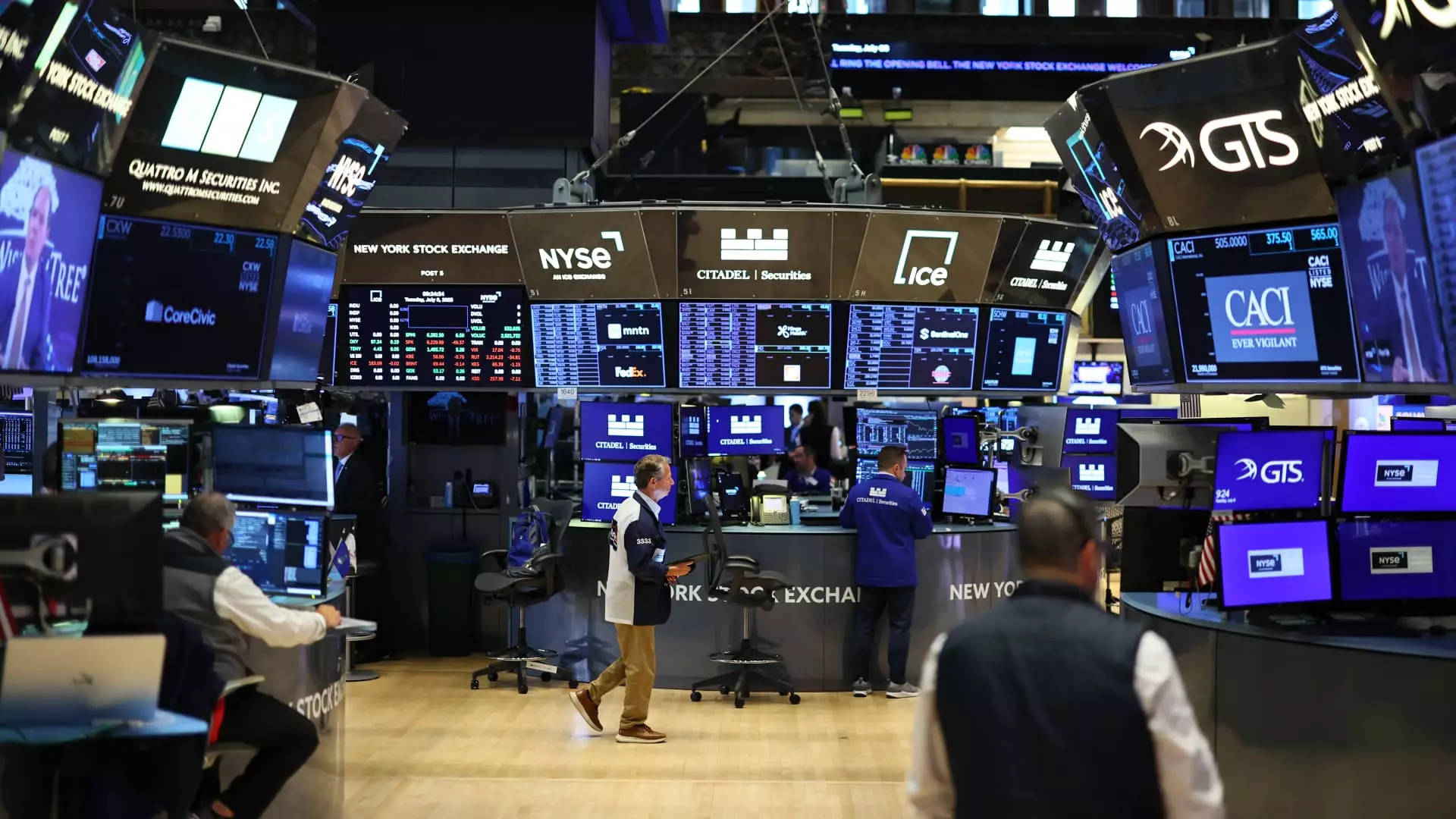Investors triumphantly clinging to bonds and fixed income assets often cling to a false sense of security. While some experts advocate for increased exposure to Treasury bills and bonds amid a sluggish economic outlook, such cautiousness might not be the silver bullet many believe it to be. The notion that rising bond yields guarantee safety underestimates the profound risks lurking beneath the surface. A focus solely on fixed income as a safe haven risks fostering complacency in a landscape marked by relentless economic shifts, political upheavals, and potential inflationary pressures.
The current narrative promoting bonds as a protective fortress conveniently overlooks the complexities of the debt markets. Yields hovering around 4.4% on 10-year Treasurys may seem appealing, but they do not account for inflationary erosion or the possibility of interest rate hikes or cuts driven by political considerations. The argument that falling yields inherently imply a safer environment ignores the potential for bond prices to plummet if market sentiment shifts or if inflation unexpectedly accelerates. Far from being a guaranteed hedge, fixed income instruments should be approached with skepticism, especially when allocations become disproportionate.
The Myth of Federal Reserve’s Benevolent Pivot
Central bank policies, especially those of the Federal Reserve, are too often seen as dependable anchors in turbulent waters. Predictions that the Fed will cut interest rates late this year to bolster employment and bonds might seem logical on paper, but they underestimate the volatility inherent in macroeconomic management. This “hope” for an easy policy pivot is rooted more in wishful thinking than in concrete economic fundamentals. Governments and central banks have historically oscillated between policies that exacerbate instability and those that mitigate it.
A too-optimistic outlook on rate cuts risks ignoring the long-term damage from short-term interference. Walking into the second half of the year with expectations of rate reductions to stimulate growth presumes that inflation will be manageable and that employment figures will remain resilient. However, global inflationary pressures, geopolitical tensions, and domestic policy headwinds threaten to derail this delicate balancing act. Investors relying heavily on the supposed “insurance” of declining rates might find themselves unprepared for the fallout of a stubbornly high-price environment.
The Fallacy of Defensive Strategies in a Fragile Economy
BlackRock’s advocacy for a “barbell” approach, blending cash, stocks, and buffer ETFs, sounds innovative but glosses over fundamental risks. While these strategies aim to provide downside protection with some upside potential, they do not fundamentally address the underlying fragility of the broader economy. Buffer ETFs and other hedging instruments can offer temporary relief but are not a substitute for comprehensive risk management. In an era of unpredictable geopolitical contests, technological disruptions, and climate-related shocks, reliance on financial engineering to shield investors is misplaced.
Furthermore, the enthusiasm around macro themes like AI and infrastructure as growth drivers ignores the volatility and systemic risks those sectors carry. While they may appear enticing, they are not immune to regulatory crackdowns, technological obsolescence, or geopolitical conflicts. Jumping onto these trends without a nuanced understanding can lead to substantial losses. The broader warning here is that many investors are gravitating toward complex strategies and thematic plays as a form of justification rather than as sound investment principles rooted in the current economic realities.
The Critical Need for a Realistic, Balanced Perspective
Fundamentally, the narrative that the economic downturn will be mild and that fixed income will serve as a safe harbor is overly optimistic. Investors should adopt a more nuanced stance that acknowledges the perils of overconcentration in any asset class. A balanced portfolio must incorporate not only bonds but also diverse equities, alternative investments, and a healthy reserve of liquidity. This kind of diversification guards against unforeseen shocks that traditional safe assets are ill-equipped to withstand.
In this climate, active skepticism should replace passive optimism. The outlook hints at a prolonged period where markets will test investors’ resilience. Policymakers are playing a dangerous game, and markets have demonstrated their capacity for sharp reversals. Instead of blindly trusting narratives of inevitable Fed rate cuts or robust bond returns, investors should critically question these assumptions and prepare for a scenario where economic performance underwhelms, and financial volatility surges.
In a world rife with uncertainty, the real power lies in skepticism, vigilance, and strategic flexibility. Relying heavily on conventional safe havens and popular macro themes without ongoing critical assessment is a perilous folly. Only by embracing a resilient, adaptable mindset can investors hope to navigate the turbulent waters ahead—and emerge with their financial health intact.

